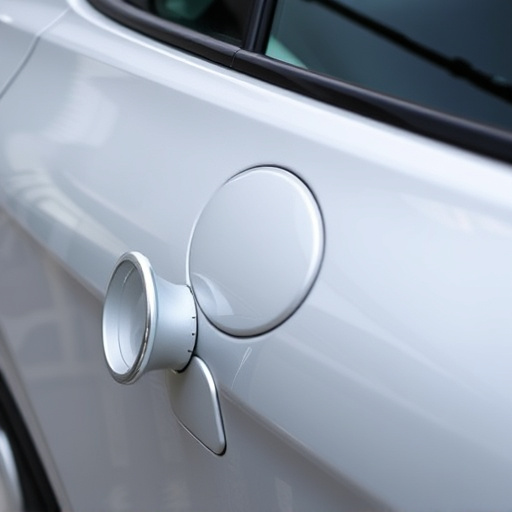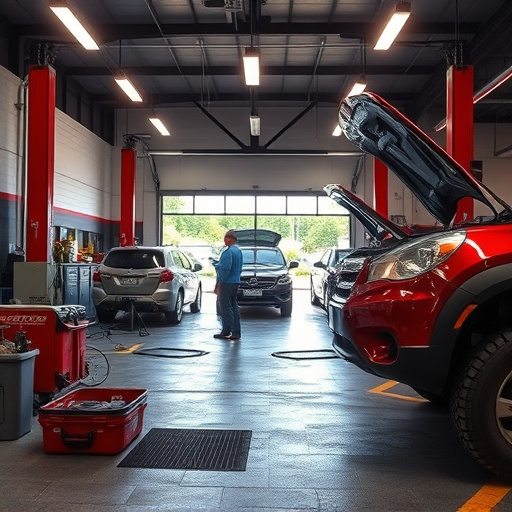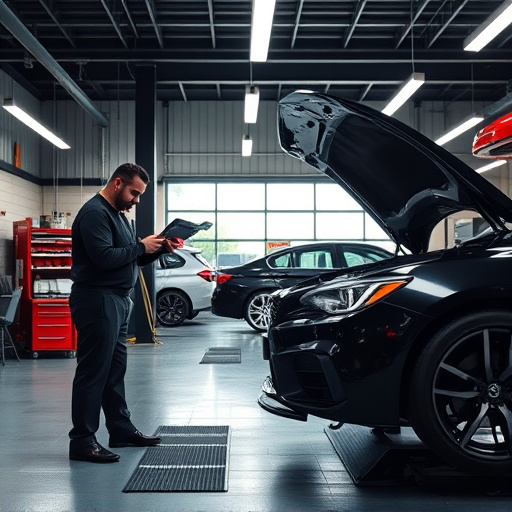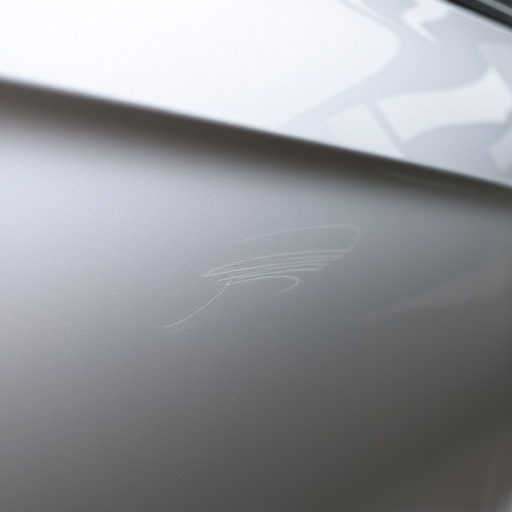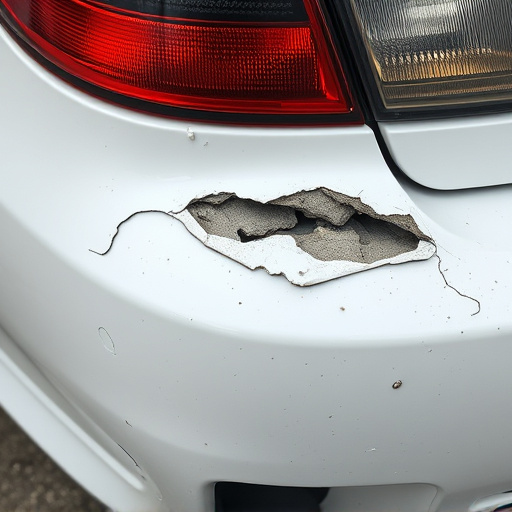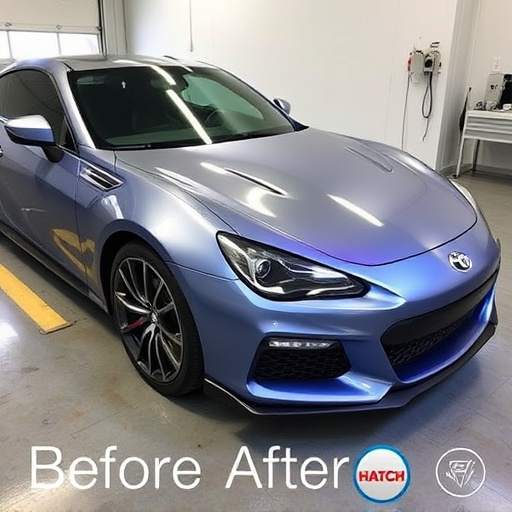Rain sensor glass repair revolutionizes car collision repairs by leveraging sensors that detect moisture on windshields and activate safety functions. Professionals calibrate these sensors using specialized tools to ensure accurate readings for precise repairs, preventing energy waste and enhancing driver safety. Regular maintenance includes cleaning minor glitches and replacing cracked glass, ensuring optimal visibility during adverse weather conditions.
“Unleash the power of advanced rain sensor diagnostics for precise glass repair. This comprehensive guide delves into the intricate world of sensor technology, offering valuable insights for professionals. We explore ‘Understanding Rain Sensor Diagnostics’ and provide ‘Advanced Techniques’ to calibrate sensors for optimal accuracy. Additionally, we equip you with tools to tackle common issues, ensuring quick and effective repairs. Master the art of rain sensor glass repair with these essential tips.”
- Understanding Rain Sensor Diagnostics: Unlocking Glass Repair Secrets
- Advanced Techniques: Enhancing Sensor Calibration for Accurate Readings
- Common Issues & Troubleshooting: Quick Fixes for Optimal Performance
Understanding Rain Sensor Diagnostics: Unlocking Glass Repair Secrets
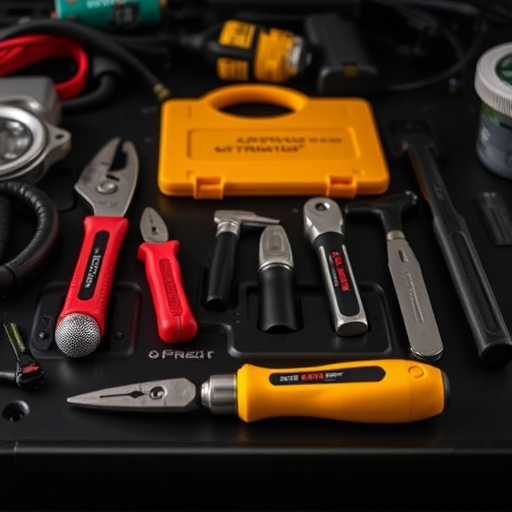
Rain sensor diagnostics is a powerful tool that can provide valuable insights into glass repair processes, revolutionizing the way we address car collision repairs and even minor dents. By understanding how these sensors work, professionals can unlock secrets to more effective and efficient glass restoration. This technology plays a pivotal role in modern vehicle systems, ensuring safety and comfort.
When a car encounters adverse weather conditions, rain sensors come into play, detecting moisture on the windshield and activating corresponding functions like wiper activation or defrost settings. In the realm of glass repair, this diagnostic capability is invaluable. It helps identify subtle changes in the glass’s structure caused by collisions or impacts, which might not be apparent to the naked eye. Thus, it aids in precise collision damage repair, ensuring that every repair is tailored to the specific needs of the vehicle’s rain sensor system and overall safety functionality.
Advanced Techniques: Enhancing Sensor Calibration for Accurate Readings
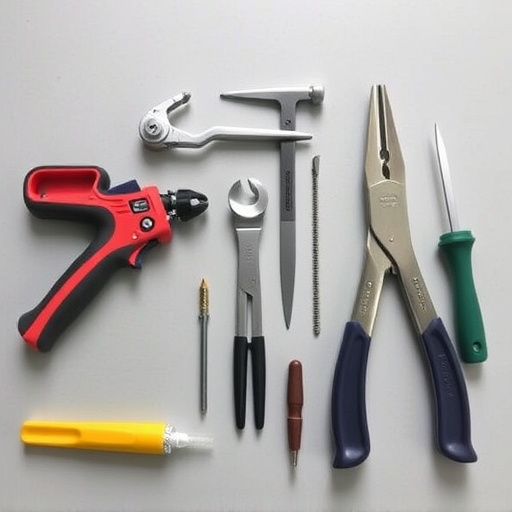
In the realm of modern automotive diagnostics, rain sensors play a crucial role in enhancing safety and comfort. To unlock the full potential of these advanced technologies, especially for those engaged in rain sensor glass repair, mastering calibration techniques is essential. Accurate sensor readings are paramount for proper vehicle performance, ensuring that defrosters and wipers activate only when necessary to prevent unnecessary energy consumption.
Professional auto repair shops often employ sophisticated methods for calibrating rain sensors, including using specialized tools to simulate various weather conditions. This meticulous process involves adjusting sensitivity settings and fine-tuning algorithms to account for differences in glass coatings, vehicle models, and even regional climatic variations. By implementing these advanced techniques, dent repair experts and car collision repair specialists can ensure that rain sensors function optimally, contributing to a safer and more efficient driving experience.
Common Issues & Troubleshooting: Quick Fixes for Optimal Performance

Rain sensors play a crucial role in modern vehicle wiper systems, ensuring optimal visibility during adverse weather conditions. However, like any other component, they can encounter issues that hinder their performance. Common problems include sensor malfunction, incorrect positioning, or damage to the glass due to harsh weather or accidents. If your rain sensor is not functioning properly, consider these quick troubleshooting fixes for a seamless driving experience.
For minor glitches, cleaning the sensor with a soft cloth and de-icing fluid can often resolve the issue. Ensure the area around the sensor is free from debris and contaminants. In cases where the glass is cracked or damaged, professional automotive body work and rain sensor glass repair services are recommended. Skilled technicians can replace the sensor or repair the glass, ensuring your vehicle’s safety and visibility during rainy conditions. Regular maintenance and prompt attention to any issues will contribute to a well-maintained vehicle and safer driving practices.
Mastering advanced tips in rain sensor diagnostics empowers you with the expertise to perform meticulous glass repairs, ensuring optimal vehicle safety and performance. By understanding these techniques, from calibrating sensors for precise readings to troubleshooting common issues, you can extend the lifespan of automotive glass and drive with enhanced peace of mind. For those dedicated to rain sensor glass repair, this knowledge is an invaluable asset in today’s technological landscape.



